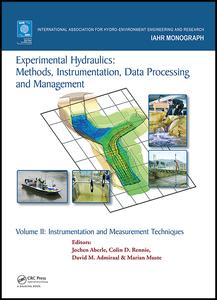

Most ebook files are in PDF format, so you can easily read them using various software such as Foxit Reader or directly on the Google Chrome browser.
Some ebook files are released by publishers in other formats such as .awz, .mobi, .epub, .fb2, etc. You may need to install specific software to read these formats on mobile/PC, such as Calibre.
Please read the tutorial at this link: https://ebookbell.com/faq
We offer FREE conversion to the popular formats you request; however, this may take some time. Therefore, right after payment, please email us, and we will try to provide the service as quickly as possible.
For some exceptional file formats or broken links (if any), please refrain from opening any disputes. Instead, email us first, and we will try to assist within a maximum of 6 hours.
EbookBell Team

4.7
106 reviewsThis is the second volume of a two-volume guide to designing, conducting and interpreting laboratory and field experiments in a broad range of topics associated with hydraulic engineering. Specific guidance is provided on methods and instruments currently used in experimental hydraulics, with emphasis on new and emerging measurement technologies and methods of analysis. Additionally, this book offers a concise outline of essential background theory, underscoring the intrinsic connection between theory and experiments. This book is much needed, as experimental hydraulicians have had to refer to guidance scattered in scientific papers or specialized monographs on essential aspects of laboratory and fieldwork practice.
The book is the result of the first substantial effort in the community of hydraulic engineering to describe in one place all the components of experimental hydraulics. Included is the work of a team of more than 45 professional experimentalists, who explore innovative approaches to the vast array of experiments of differing complexity encountered by today’s hydraulic engineer, from laboratory to field, from simple but well-conceived to complex and well-instrumented. The style of this book is intentionally succinct, making frequent use of convenient summaries, tables and examples to present information. All researchers, practitioners, and students conducting or evaluating experiments in hydraulics will find this book useful.